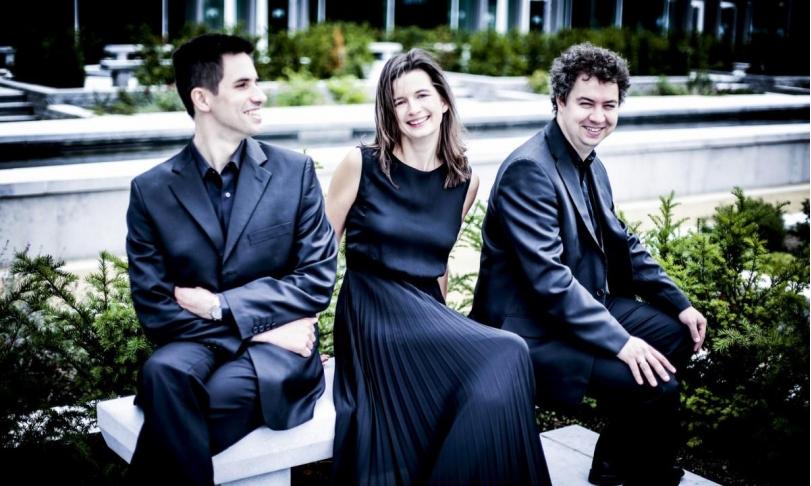
The Belgian Trio Khaldei with the pianist Barbara Baltussen, the violinist Pieter Jansen and the cellist Francis Mourey formed in 2011 and since then being particularly successful in the concert halls of their homeland. The name giver of the trio is not a musician or composer, but the photographer Evgueni Khaldei, the photographer whose photo "On the Reichstag of Berlin" embodies the end of Nazi rule like no other and has made a name for his portraits of eminent Russian artists. Inspired by the search for truth of the Russian photographer in tough times and by his authentic photographs, the young musicians of the trio recognize in Evgueni Khaldei a model for their approach to the interpretation of partly unknown compositions of the twentieth century. A specialty of the Trio Khaldei is the performance of Russian compositions of the first half of the twentieth century. So, it is no surprise that the trio’s first album, recorded in 2016, is devoted to the celebrated composers of the Soviet era Dimitri Shostakovich and Sergei Prokofieff.
Shostakovich's Piano Trio No. 1 in one movement written in 1923 in the composer's seventeenth year of life is strongly bound up with romanticism and radiates an optimism which got lost in 1930 when he suddenly and long-lasting fell in disgrace of Stalin with his opera Lady Macbeth von Mzenzk. Here and there, in this early piano trio, the composer's special, glaring humor announces, which sometimes strikes into the romantic mood like a bolt from the blue. And, of course, the course of the music, which typical Shostakovich, is not without hectic features, is not entirely without dissonances. Fourteen years after the Lady Macbeth disaster the Piano Trio No.2 Op. 67 originates from the final phase of the Second World War. The feeble beginning of the trio, with its thin, almost bodiless cello solo, marks the one extreme of the mood of this work, the other of which being nothing but the expression of total despair. A truly grotesque piece of music reflecting the martial situation, which is nothing less than a requiem for the innumerable victims of the Second World War.
Also concerning Prokofieff, the musicians of the Trio Khaldei, being active as duo, oppose an early composition, the Ballad for Cello and Piano from the year 1912 to the later Five Melodies for Violin and Piano Op. 35 (1925). In this period, Prokofieff was fortunate enough to create compositions, free from the ills of Soviet oppression, bound up with Romanticism like the first Piao Trio of Shostakovich. The ballad makes it clear that Romanticism, in addition to sometimes being full for zest of life, is also aware of nightly dark-shrouded, tension-laden searching with uncertain result. In Prokofieff's Ballad, the piano plays the part of the mood-maker, while the cello takes on the role of the ballad-counter in long lyrical lines. Without clearly defining the outcome of the ballad, one gains the impression that their protagonist ultimately escapes the darkness of the night.
Originally designed as songs without words for piano and a singer, Prokofieff arranged the Five Melodies op. 35 for piano and violin. Thanks to a rich tuneful melody development melody, and ascending to high pitches, which are inaccessible to the human voice, this song-composition adapted to the characteristics of the violin and permeated by Prokofieff's wit - the Sinfonie Classique sends its regards - enjoys some popularity up to today.
The three musicians of the Trio Khaldei, in their trio as well as in their respective duo incarnation, confidently find the best possible interpretation of these Russian compositions, being true to their name giver Evgueni Khaldei, who placed the search for truth and the authentic portrayal of historical and private situations before all else.
Barbara Baltussen, piano
Pieter Jansen, violin
Francis Mourey, cello








